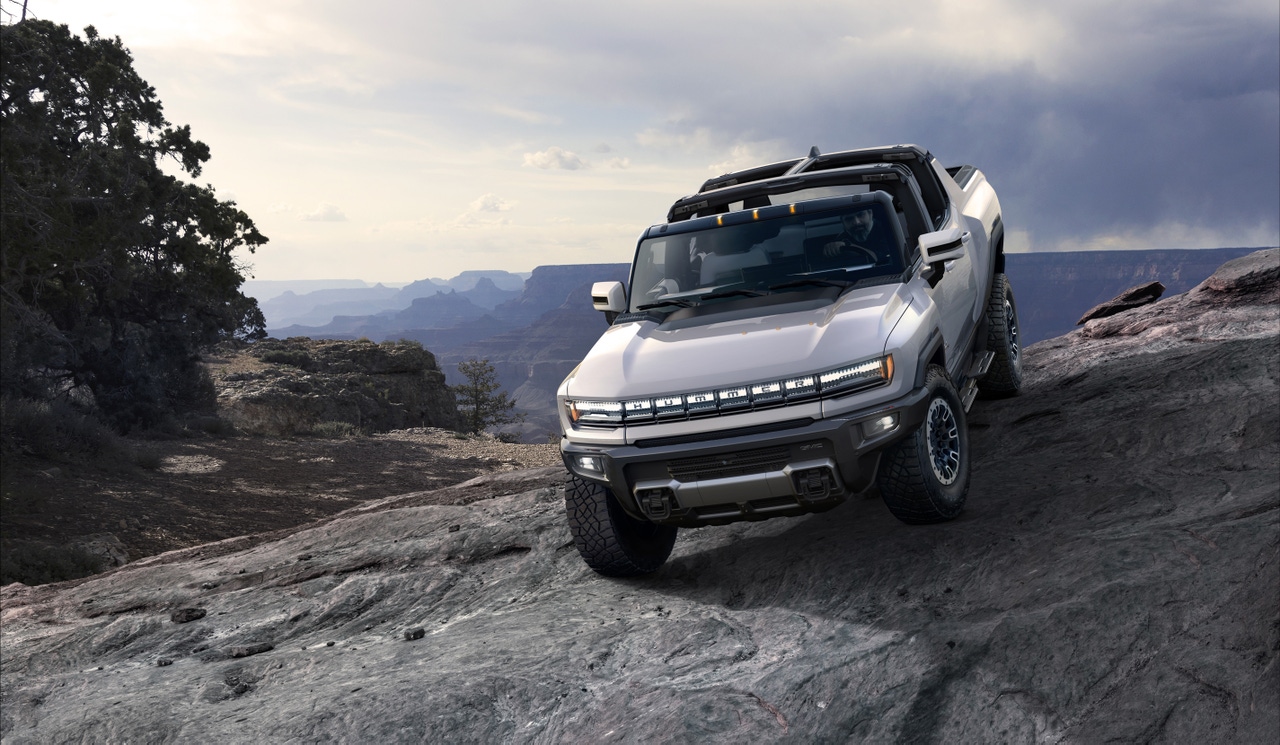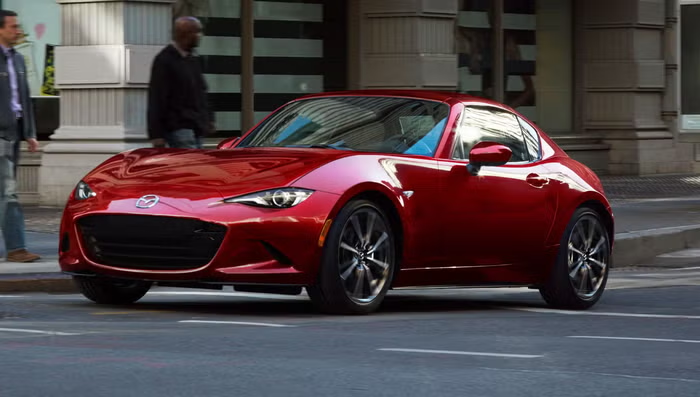What Europe Can Teach America on Road Safety: Killing by DesignWhat Europe Can Teach America on Road Safety: Killing by Design
A study by The Economist points out that if there were a mandate on U.S. passenger vehicles to be limited to a weight of less than 5,000 lbs., a potential 2,300 lives in multi-vehicle accidents could be saved annually.

First of Two Parts
Americans don’t just use guns to kill their fellow citizens; they are using their cars.
That’s the suggestion of a study, American Cars: Dangerously Heavy (Sept. 7, 2024), by renowned news analysis magazine, The Economist, that places much of the blame for the U.S.’ stubbornly high road fatality rates on overly heavy passenger vehicles causing enormous collateral damage in collisions.
Other factors include an almost nonexistent focus on building vehicles with third-party and vulnerable road user protection systems and intersections that could be made much safer with the adoption of the European “roundabout” infrastructure.
This correspondent has had firsthand experience of what happens when a heavier vehicle collides at speed with a smaller car, having been involved in a head-on highway crash with a closing speed, according to the coroner, in excess of 150 mph (242 km/h).
Driving a brand-new test 2002 Lexus RX300 returning home from a night shift, a set of headlights, in the river of lights driving in the opposite direction on the curve of an elevated section of the highway, looked odd until I realized they were in my lane. A stab on the brakes and a partial steer was all I had time to enact.
Afterwards, the 3,925-lb. (1,780-kg) Lexus had shortened by about 3 ft. (1 m) and, apart from broken ribs from the seat belt, the airbags front and side worked, as did the active headrest to catch my rebounding head, and I was reasonably OK.
The 2,002-lb., 910-kg (910-kg) Nissan Micra, being driven by a drunk the wrong way along the outside overtaking lane I was in, burst open like a tin can and resembled, as one of the accident first responders commented, “like a crop sprayer.”
This disparity in vehicle size guaranteed a fatality and therein is the problem that motorists using American highways are finding out.
The U.S. has seen a gradual annual decline in road accident fatalities begin to stall nearly a decade ago with year-on-year increases in deaths per 100,000 population compared to the European Union’s record.
In America, the latest figure for the year 2022 amounts to 135 people killed per 100,000 crashes against the EU’s 4.6 deaths per 100,000 for the same year.
Vehicles on both sides of the Pond share similar advanced driver assistance systems (ADAS) that have done much to reduce road deaths, and that has been reflected in Europe’s ever-improving safety statistics.
Yet, in the U.S., all that extra technology has seemingly had little or no effect. That’s because, the magazine’s study argues, of the ever-burgeoning size and weight of American vehicles on its roads.
For while these behemoths of transport do boast vastly improved safety for occupants, they become killing machines for everything else they hit on the road.
As an indication, the study points out that the average passenger vehicle in the U.S. is 25% heavier than those in Europe and 40% heavier than those in Japan.
And it was the rise of the SUV that really kicked off the race to build bigger; SUVs’ market share rose from 6% in 1990 to 26% in 2005, pushing the average U.S. vehicle weight up from 3,400 lbs. (1,542 kg) to 4,100 lbs. (1,860 kg).
The Economist study researched 10 years of collision data compiled by police departments in 14 states. Comparing the listed vehicle weights of the cars involved, the study found that the heaviest vehicles were safer for occupants.
The heaviest 1% of the vehicles, weighing around 6,800 lbs. (3,084 kg), suffered an average of 4.1 “own-car deaths” per 10,000 crashes, rising to 6.6 deaths for mid-weight vehicles weighing 3,500 lbs. (1,588 kg), with the lightest 1% weighing just 2,300 lbs. (1,043 kg) suffering 15.8 deaths per 10,000 accidents.
However, the heaviest vehicles were killers of the people they hit, taking the lives of 37 people in “partner-car deaths” per 10,000 crashes compared to 5.7 for the middleweights and 2.6 for the lightest vehicles.
The study points out that if there were a mandate on U.S. passenger vehicles to be limited to a weight of less than 5,000 lbs. (2,268 kg), a potential 2,300 lives in multi-vehicle accidents could be saved annually.
U.K. vehicle technology analysis specialist Thatcham Research’s principal engineer for automotive safety, Alex Thompson, emphasizes the risks of heavyweight vehicles in a collision. He tells WardsAuto: “In Europe over the last 10 years we have seen a steady decline in accident statistics, a drop of something like 20% in vulnerable road-user fatalities. Whereas, at the same time, the U.S. has seen those fatalities go up by more than 50%.”
He believes the huge difference in various vehicle weight and mass in a collision will increase the likelihood of death and serious injury. He says: “Research into vehicle compatibility (in Europe) has been going on since the 1970s and it’s a very well-known phenomenon that if you’re in a much heavier vehicle and impact a smaller vehicle, then the smaller vehicle is unlikely to come out of the crash very well.”

Mazda Miata tips scales at less than 2,500 lbs.
Thompson also stresses the importance of considering vehicle design in terms of how vehicles align with each other in the event of a collision.
He explains: “In 2020, Euro NCAP introduced the mobile progressive deformable barrier test so instead of crashing the car against a solid wall, this test uses a crash between a vehicle and a moving trolley to replicate the other car in the collision.
“The trolley has a deformable barrier at its front and it’s how the vehicle being tested can spread its impact load at the front and how well its structures can engage with another vehicle. Also, how it manages the energy share in the crash and that’s how it will be assessed.
“Vehicles with poor compatibility can have several points taken off their overall test score. So, it’s not just about self-protection for the own occupants, it’s keeping that high level of safety but also to encourage partner protection and how that structure interaction and energy share can be managed with the opposing vehicle.
“Obviously, the larger vehicles will have to work harder to protect smaller vehicles and we hope this will encourage manufacturers to design their larger vehicles to protect smaller partner vehicles better.”
Matthew Avery, director of strategic development for Euro NCAP, agrees, albeit he says a vehicle’s weight is probably a secondary issue when considering vehicle design. He explains: “Whilst the mass ratio between cars can be significant, their interaction can be more important when it comes to survivability.
“As part of Euro NCAP's crash test program, here a larger and heavier car should not only protect its occupants but also the occupants in the smaller opposing vehicle. Manufacturers aim to make the vehicle structures as homogeneous as possible and have multiple load paths to ensure high energy absorption and minimal passenger compartment intrusion.”
At the moment, vehicle weight is accelerating in the U.S. and is likely to increase further with the electrification of powertrains as heavier battery packs are added all the way up to the long-range BEV. In 2023, 31% of America’s new cars weighed more than 5,000 lbs. compared to 22% in 2018.This situation is exacerbated by a lack of regard for building in safety features to mitigate impact for the third-party vehicle of vulnerable road users such as pedestrians, cyclists and motorcyclists. It points out that the U.S. safety organization, the National Highway Traffic Safety Admin. dishes out its five-star vehicle safety ratings based on occupant safety and doesn’t consider “partner-vehicle” safety at all.
About the Author
You May Also Like

